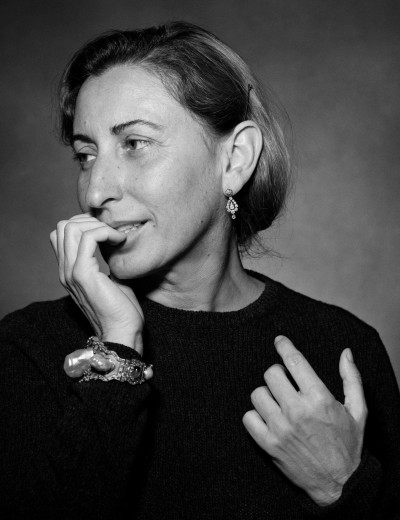the designers
Miuccia Prada's grandfather, Mario, founded the family luxury leather goods company in Milan in 1913.
1950 Miuccia Prada was born. She was an unlikely successor, having spent the last five years studying to became a doctorate in political science and performing mime at Milan's Teatro Piccolo, being a paid-up member of the Communist party and champion of women's rights in Seventies' Milan. But she soon proved her worth.
Show Full
In 1970 she started making backpack bags out of waterproof fabric called Pocone. 1979 She took over the Prada family business. Since sales were down, she expanded into luxury tote bags and backpacks in black with flat classic lines, made from nylon.
In 1985, she designed a new line of black, unlabelled, hard-wearing, but finely-woven nylon handbags that immediately became must-haves for the fashion cognoscenti, seen hanging off the arm of the likes of Jerry Hall and Marie Helvin. With retail prices starting at around L250, a bootlegging industry quickly sprang up, making the authentic articles even more desirable. More importantly, Prada bags were established as the accessory of choice for supermodels and fashion editors the world over.
Prada launched her eponymous ready-to-wear collection for autumn/winter 1989 to critical acclaim. The plain, almost austere lines of her designs provided a stark contrast to the overtly sensual designs of other labels of the time and one admiring fashion journalist described Prada's clothes as "uniforms for the slightly disenfranchised".
In 1992, she debuted the less expensive bridge line Miu Miu (Miuccia's nickname), inspired by her personal wardrobe of earthier, hippies garments in natural fabrics and colours. Clean and stylish designs, fine materials and exquisite craftsmanship conspired to win Prada a Council of Fashion Designers of America International Award in 1993. A year later, she showed in New York for the first time and opened her London boutique. She now shows for Prada and Miu Miu twice a year in Milan.
1998 Prada opened their first menswear shop in Los Angeles, USA. They also opened new Prada stores in Manhattan and Las Vegas, as well as Miu Miu's first North American boutique, in Los Angeles. Prada is now a worldwide empire, with stores in practically every country in the western world. It is a million dollar concern, with every celebrity wearing Prada clothes.
the label
Patrizio Bertelli (Miuccia Prada's husband) made a series of acquisitions which began in the late 90;s, taking over Helmut Lang, Church Shoes, Jil Sander, Fendi and other companies. Prada (as part of a consortium) took over the house of Jil Sander in 2000, but Bertelli had a fight with the designer who had built up the house of her own name and the result was that she left. As part of her agreement to leave, Jil Sander is not permitted to have anything to do with fashion till 2003.
At the end of 2001, they were some $ 1 billion in debt. They decided to sell Fendi to LVMH (who own Dior, Givenchy and other houses) for S 250 million. Industry watchers felt that Prada was facing a serious cash crisis. Then in April 2002, Prada sold Byblos, a house that they had only acquired in June 2001. Fabio Zambernardi joined Prada in 1997 and his design responsibilities have grown with the company. In December 2002, he was appointed Design director for Prada and Miu Miu, thus becoming Miuccia Prada's main man.
